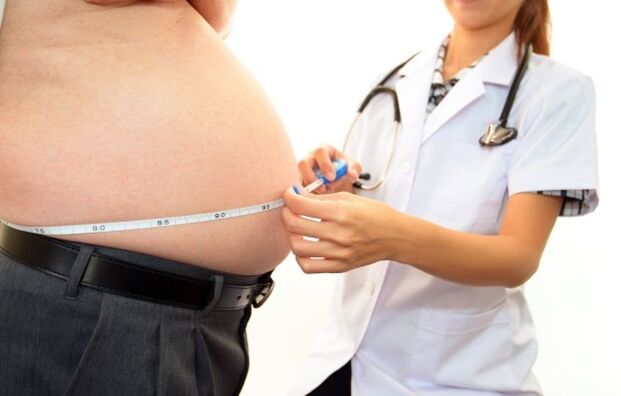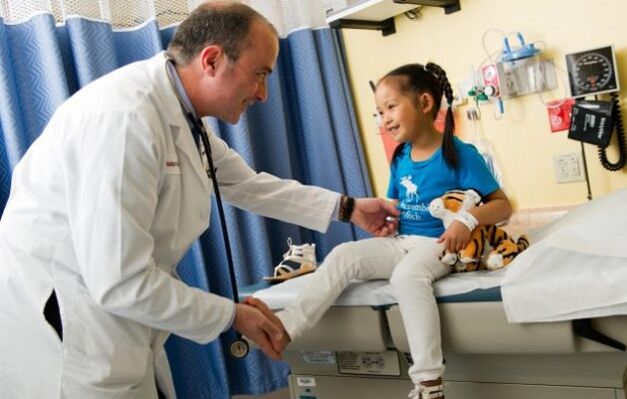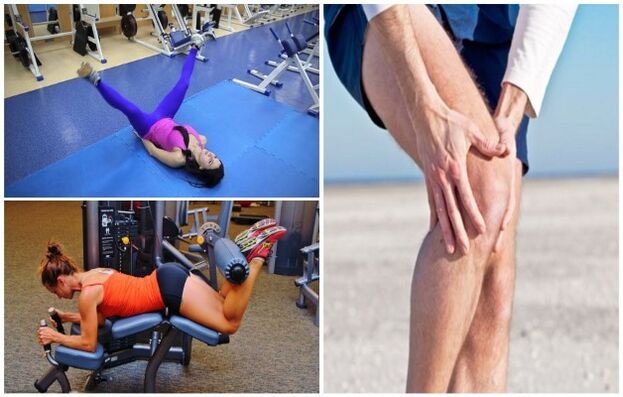Osteoarthritis of the hip joint is a disease of the musculoskeletal system with a progressive course and chronic nature. Dystrophic changes begin in the cartilage tissue, which changes its structure, becomes loose, fibrous, thins and loses its cushioning function. As a result, the bone joints begin to rub against each other, motor activity is lost and pain occurs. In the absence of treatment, a person becomes disabled.
Clinical picture and causes of osteoarthritis
Osteoarthritis of the hip joint occupies a leading position among diseases of the musculoskeletal system and mainly affects the elderly population after 35 years. In the medical classifier it is assigned the code M16 according to MBK 10.
The hip joint is the largest in the human body and takes the greatest load. It connects the bones to the pelvis and has a spherical appearance. The round head of the femur is inserted into the acetabular notch. Its surface is covered with cartilage tissue, which allows the bones to slide and performs shock-absorbing functions, protecting the bones from friction, destruction and providing range of motion.
The mechanism of osteoarthritis is simple:
- The amount of synovial fluid decreases, which makes the joint wash worse than it and the supply of nutrients decreases.
- The structure of the joint loosens. Due to friction, the cartilage becomes thinner, it ceases to soften the pressure on the bones.
- Growths (osteophytes) form on the edges of the bone sites.
- The intermediate joint gradually decreases.
- The person experiences severe pain, problems with movement, the limb shortens, which provokes lameness.
Osteoarthritis of the hip can develop for several reasons, but is more often provoked by a combination of adverse circumstances. The disease is divided into primary and secondary. In the first case, doctors do not find a reason for the development of the disease, in the second, osteoarthritis occurs due to certain pathologies.

Main reasons:
- trauma;
- force loads, especially in the post-traumatic period, when the joint has not yet recovered;
- Overweight;
- congenital anomaly of the femoral head (dysplasia);
- heredity;
- arthritis (inflammation of the joints);
- prolonged stress;
- hormonal changes and diseases of the endocrine system;
- infectious diseases.

Osteoarthritis can be unilateral, with damage to the right or left hip joint. More often there is a bilateral variant when the pathological process affects both sides.
Symptoms and degrees of osteoarthritis
The clinic of osteoarthritis directly depends on the stage of the disease. At first, the person begins to feel slight discomfort in the groin and morning stiffness of the legs, until swelling and swelling of the soft tissues do not appear. With the development of the pathology begins an acute period, which is characterized by intense pain.
On a note. When the first symptoms are detected, you should consult a doctor and undergo an examination. Early illness responds well to treatment.
The main complaint of all patients is pain and limited mobility. Their severity depends on the dystrophic changes in the cartilage.
There are 3 stages of the disease:
- At 1 degree there is only discomfort after prolonged physical activity (climbing, running, cycling), which disappears on its own after a break. The muscles are in good shape, the movements are not limited. The X-ray may show a narrowing of the joint space.
- At 2 degrees, pain begins, which is felt in the groin area, spreads to the buttocks and front of the thigh. There are "starting" pains when trying to get up or start walking, which disappear after 2-3 minutes. After prolonged exercise, the pain increases and disappears at rest. A symptom of osteoarthritis is a characteristic crunch in the joint, movements are limited (abduction of the thigh), muscle strength decreases, with painful sensations there is a spasm of smooth muscles. The X-ray shows small osteophytes that are located at the edges of the bony areas of the joints. The neck of the femur is thickened and dilated, the joint space is significantly narrowed.
- In stage 3 of the disease, the pain is constant and does not subside even at rest. When walking, patients use improvised objects (cane, crutch). Atrophy of the muscle tissue of the thigh and lower leg is observed, the limb is shortened - to reach the ground, the patient is forced to stand on tiptoe. The X-ray image shows massive osteophytes, the head of the femur is flattened, the joint space is practically invisible.
Some doctors also distinguish between the 4th degree of the disease. Ossification of the joint and complete damage occur on it, a person cannot move without the help of crutches. The degree of arthrosis is determined on the basis of X-rays, which help to clarify the etiology of the pathological process.
The following types of osteoarthritis are distinguished:
- dysplastic - the inclination of the acetabulum is determined;
- post-traumatic - depends on the nature of the injury and the shape of the joint after bone fusion.
Pediatric osteoarthritis
The causes of pathology in children are trauma, subluxation and dysplasia. Metabolic disorders can provoke the destruction of cartilage tissue.
The main symptom of the disease in children is pain after long games. With the development of osteoarthritis, they become more intense and stronger. The child refuses to run, his appetite decreases, excessive tearing occurs. The second symptom is limited movement in the affected joint, tingling in the legs. Parents should pay attention to the characteristic crunch. If the first symptoms are detected, it is necessary to urgently consult a doctor.
On a note. A child's body regenerates faster than an adult's body. Timely treatment will save the child from harm.
If the diagnosis is confirmed, the main goal is to improve the blood supply to the joint. For this, the doctor prescribes various physiotherapy procedures, physical therapy, visits to sanatoriums, medicines.

Prevention consists in proper nutrition. Vitamins from group B, C, D are especially important. It is necessary to walk a lot in the fresh air, to move actively and to avoid traumatic situations.
Difference between osteoarthritis and other joint diseases
Many patients, after hearing the diagnosis of "arthrosis", confuse it with other diseases of the joints. Doctors in medical history often note "coxarthrosis". Consonant words confuse the patient.
Osteoarthritis is the common name for pathological processes that cause destruction of cartilage tissue. It usually passes with deformity of the joints without infectious and inflammatory processes. It can affect the knee, elbow, shoulder and other joints. Coxarthrosis is osteoarthritis of the hip joint, as indicated by the prefix "coke", which emphasizes a specific area.
What is the difference between sacroiliitis and osteoarthritis? In the first case, inflammation of the sacroiliac joint occurs, which is characterized by pain in the sacrum when sitting. There is swelling of the vertebrae, pain in the buttocks. Osteoarthritis causes thinning of the cartilage, as a result of which bone friction begins - this causes pain.
Arthritis is an inflammatory process in the joint tissue. The difference with osteoarthritis is that the latter is caused by mechanical movements that lead to cartilage abrasion. Arthritis causes swelling and redness in the joint area, caused by infectious diseases or inflammatory processes inside the body. The reactive stage of the disease almost always causes osteoarthritis. The pain sensations are similar, but in coxarthrosis they subside at night, and in arthritis they become stronger.
The clinical picture is similar. To properly diagnose and rule out arthritis and sacroiliitis, doctors perform blood tests and analyzes. Elevated white blood cell count and ESR indicate an inflammatory process in the body.
Diet
Osteoarthritis requires long-term and comprehensive treatment based on medication, physiotherapy, exercise and massage, with diet playing an important role. Proper nutrition is necessary both in the exacerbation stage and in remission. It must be balanced and contain all the essential vitamins. In addition, the diet promotes weight loss, which reduces stress on the joints.
Authorized products:
- vegetables and fruits;
- lean meat;
- crumbly porridge of water;
- dairy products;
- bran bread;
- fish;
- honey;
- mushrooms;
- nuts.
The menu should include gelatin. On its basis you can prepare various desserts of berries and fruits, as well as jelly meat. Eat cottage cheese, yogurt, milk daily. It is better to replace chicken eggs with quail. Boil, simmer or stew the food. Remove fried and fatty foods. Give preference to vegetable oils. Drink at least 1, 5 clean water a day. The temperature of the food should not be too high or too low.

Avoid fast food, fast food with sweet carbonated water. Exclude semi-finished products, sausages, canning. Prefer natural products without added preservatives.
What is forbidden:
- pickles;
- smoked products;
- white bread and baked goods;
- hot spices;
- garlic;
- radish;
- fatty meats;
- Lard;
- canned foods;
- mayonnaise;
- high fat dairy products;
- carbonated drinks;
- alcohol.
Important. Food intake should be frequent, at least 5-6 times a day, 200 grams. Breakfasts are best made with your favorite fruits, you can drink a glass of kefir at night. The diet should not exceed 2000 kcal for women and 3000 kcal for men.

Prevention
Preventive measures consist in the timely elimination of the root causes of the disease and general strengthening measures.
To prevent the development of the disease, you must follow the following rules:
- To lead an active lifestyle. Swimming, exercises without straining the joint are recommended. Preventive methods include a bath and sauna, which improve blood flow and remove toxins.
- Follow a diet. This is necessary to provide the body with the necessary vitamins and speed up metabolic processes.
- Avoid hypothermia. Low temperatures cause muscle cramps that disrupt the blood supply to the joint.
- To minimize the possibility of trauma, especially in developing coxarthrosis.
In compliance with the rules, the feedback from patients was positive. They reduce pain, restore joint mobility and improve well-being.

Coxarthrosis or arthrosis of the hip joint is a disease with a chronic course, phases of exacerbation and remission. Timely treatment allows you to stop the dystrophic process in the cartilage tissue and maintain the mobility of the legs. In the absence of therapy, a person becomes disabled and in this case only surgery and joint replacement can restore the musculoskeletal system.

























